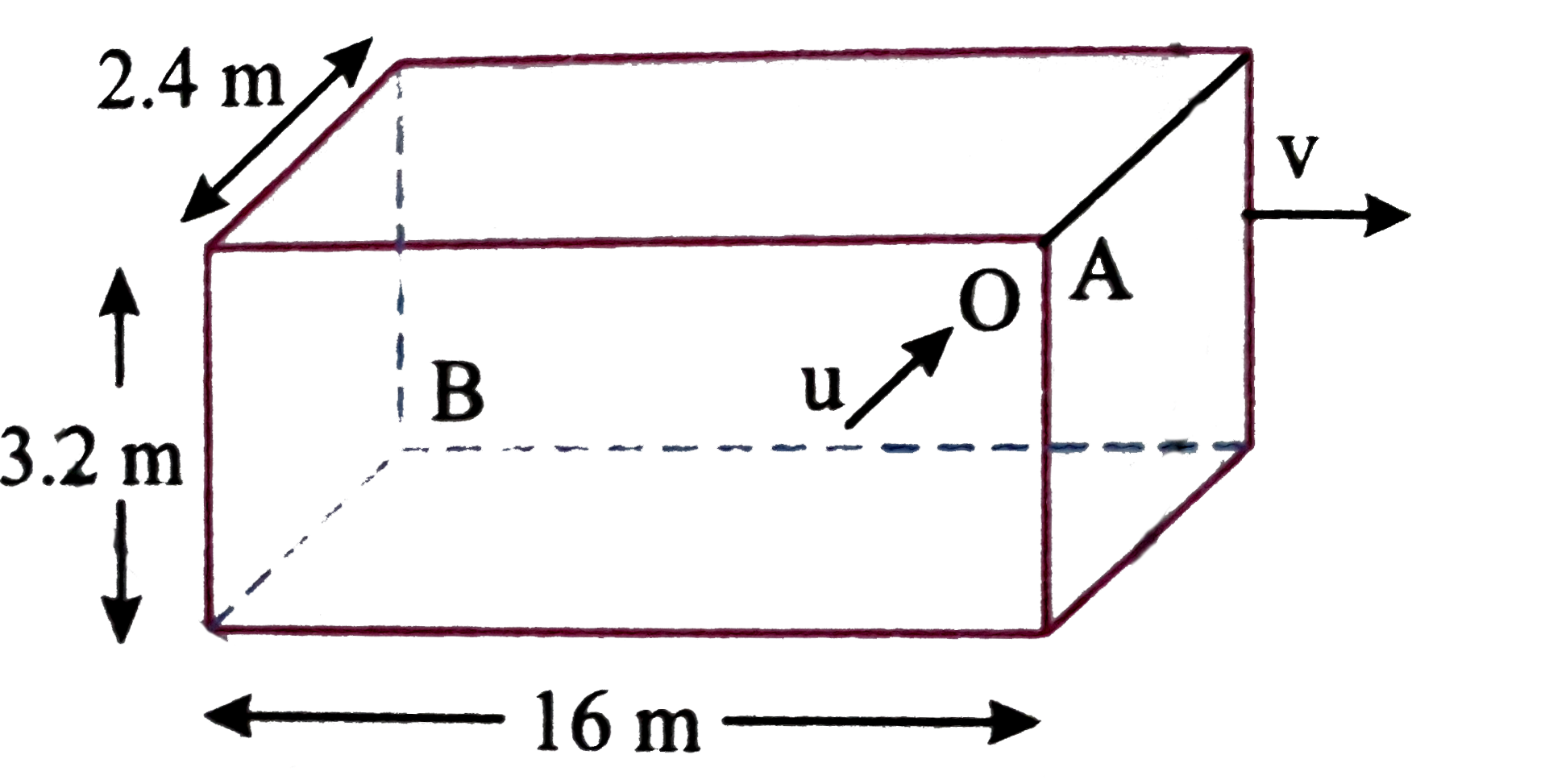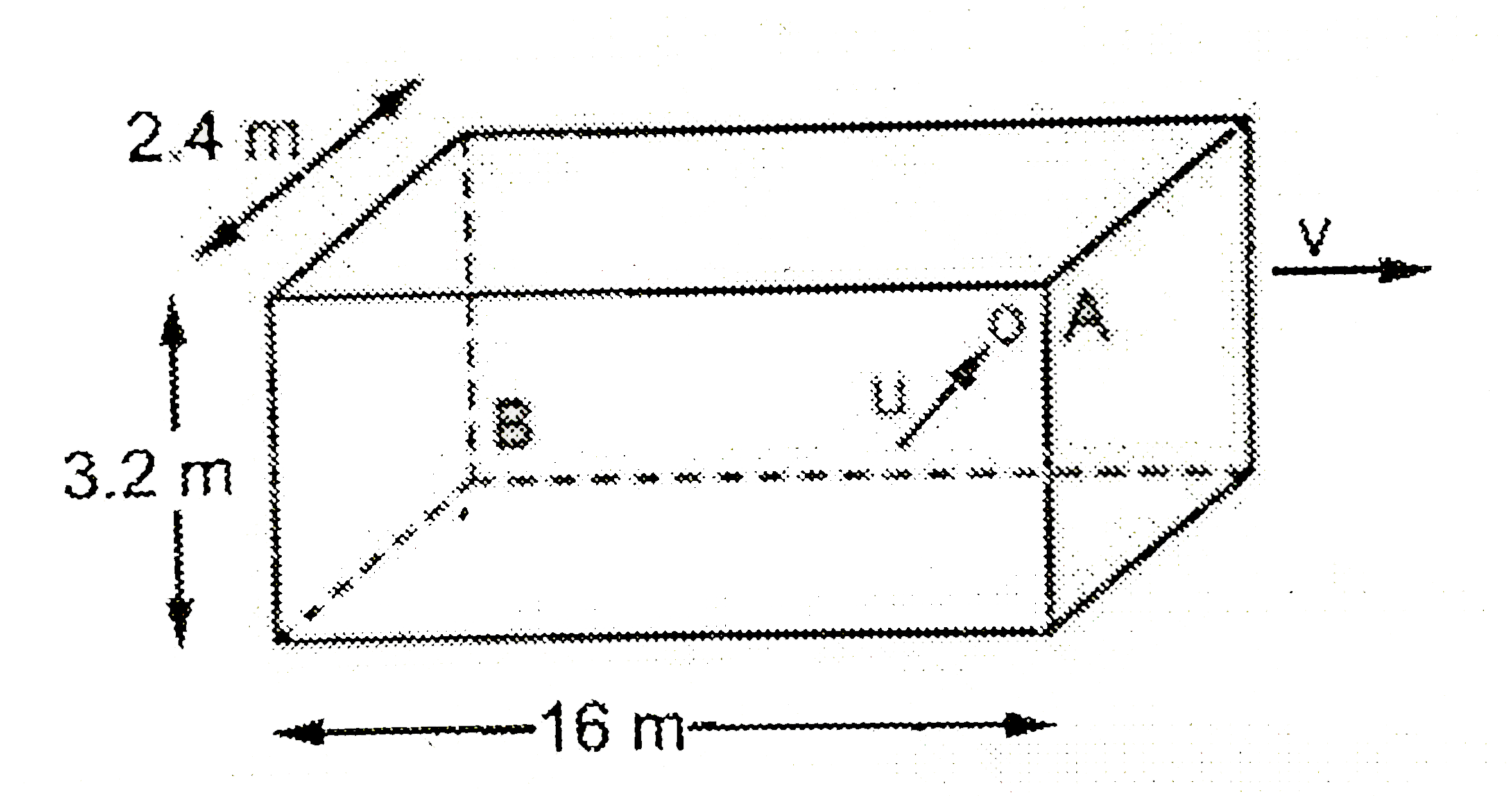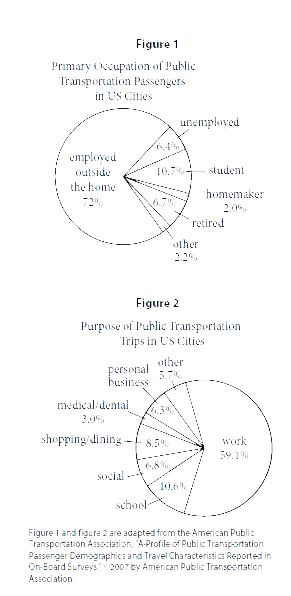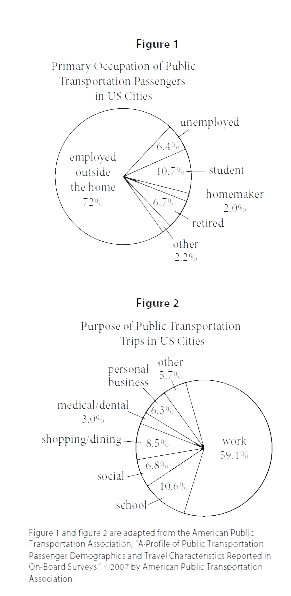A short fired at a moving train (u=30 km/h) at an angle θ= arc sin1/5 with the track enters a compartment of dimension a×b=12m×14m through a corner away form the engine and passes out through the diagonally opposite corner. Calculate the speed of the shot.
The correct Answer is:bubcosθ−asinθ=79 kmph
Topper's Solved these Questions
- COMPOSITION AND RESOLUTION OF VELOCITIESBook:NN GHOSHChapter:COMPOSITION AND RESOLUTION OF VELOCITIESExercise:Exercise
Explore 25 Videos
- CENTRIPITAL AND CENTRIFUGAL FORCESBook:NN GHOSHChapter:CENTRIPITAL AND CENTRIFUGAL FORCESExercise:Exercises (B)
Explore 36 Videos
- CONDUCTION OF HEAT AND RADIATIONBook:NN GHOSHChapter:CONDUCTION OF HEAT AND RADIATIONExercise:All Questions
Explore 24 Videos
Similar Questions
A car 2m long and 3m wide is moving at 10m/s when a bullet hits it in a direction making an angle of tan−1(3/4) with the car as seen from the ground. The bullet enters one edge of the car at the corner and passes out at diagonally opposite corner. Neglecting gravity, the time for the bullet to cross the car is
View SolutionA railway compartments is 16m long, 2.4m wide and 3.2m high. It is moving with a velocity v A particle moving horizontally with a speed u perpendicular to the direction of v enters through a hole at an upper corner A and strikes the diagonally opposite corner B.Assume g=10m/s2.

View Solution
Knowledge Check
A railway compartments is 16m long, 2.4m wide and 3.2m high. It is moving with a velocity v A particle moving horizontally with a speed u perpendicular to the direction of v enters through a hole at an upper corner A and strikes the diagonally opposite corner B.Assume g=10m/s2.
 Av=20m/sBu=3m/sCTo an observer inside the compartment, the path of the particle is a parabolaDTo a stationary observer outside the compartment, the path of the particle is parabola
Av=20m/sBu=3m/sCTo an observer inside the compartment, the path of the particle is a parabolaDTo a stationary observer outside the compartment, the path of the particle is parabola
A railway compartment is 16m long, 2.4 m wide and 3.2 m high. It is moving with a velocity v. A particle moving horizontally with a speed u, perpendicular to the direction of v, enters through a hole at an upper corner A and strikes the diagonally opposite corner B. Assume g=10m/s2.Av=20m/sBu−3m/sCTo an observer inside the compartment, the path of the particle is a parabolaDTo a stationary observer outside the compartment, the path of the particle is a parabola.A block of mass 1kg is pushed on a movable wedge of mass 2kg and height h=30cm with a velocity u=6m/sec. Before striking the wedge it travels 2m on a rough horizontal portion. Velocity is just sufficient for the block to reach the top of the wedge. Assuming all surface are smooth except the given horizontal part and collision of block and wedge is jerkless, the friction coefficient of the rough horizontal part is :
An observer having a gun observes a remotely controlled balloon. When he first noticed the balloon, it was at an altitude of 800m and moving vertically upward at a constant velocity of 5m/s. The horizontal displacement of balloon from the observer is 1600m. Shells fired from the gun have an initial velocity of 400m/s at a fixed angle θ(sinθ=3/5and cosθ=4/5). The observer having gun waits ( for some time after observing the balloon) and fires so as to destroy the balloon. Assume g=10m/s2. Neglect air resistance.
 A0.125B0.377C0.675D0.45
A0.125B0.377C0.675D0.45
A shot fired from a gun with a speed of v at an angle θ strikes an object at a point P on the horizontal plane through the point of projection.If the object at P starts moving away from the gun with uniform acceleration a the moment the gun is fired, then the elevation is to be changed to ϕ in order to strike the moving object. If ga=(1−cosnϕsinnϕ−sinnθ) .find n.
View SolutionA wooden boxcar is moving along a straight railroad track at speed v1. A bullet (initial speed v2) is fired at it from a high - powered rifle . The bullet passes through both lengthwise walls of the car , its entrance and exit holes being exactly opposite each other is viewed from within the car . from what direction , relative to the track . is the bullet fired? Assume that the bullet is not deflected upon entering the car, but that its speed decreases by 20%. Take v1 85 km/h and v2 650 m/s. (Why is the width of the boxcar not relevant in this calculation?)
View SolutionCarbon monoxide emitted by automobiles is an environmental hazard . A car has an engine of four cylinders with a total cylinder volume of 1600 cc and a fuel consumption fo 7.0 dm3 per 100 Km , when driving at an average speed of 80 km/hr . In one second , each cylinder goes through 25 burn cycles and consumes 0.400g of fuel . The compression ratio, which is the ratio between the smallest and largest volume within the cylinder as the piston moves forward and backward is 1:8.
The gasified fuel and air are compressed to their lowest volume and then ignited .
The overall stoichiometric equation for the combustion reaction is
C8H18=12.102→0.8CO+7.2CO2+9H2O
Calculate the temperature of the
i) gases just at the time of maximum compression and
ii) exhaust gases leaving the cylinder if the final pressure in the cylinder is 200 Kpa.
Relevant data needed for one burn cycle is given below.
compoundΔHf(KJmol−1)CP(Jmol−1K−1)Composition of gases after combustion(mol×10−4)N2(g)0.029.13101.91O2(g)0.029.3610.1CO(g)−110.5329.141.12CO2(g)−395.5137.1110.11H2(g)−241.8233.5812.36Isocotane−187.82
View SolutionThough there are 600 million cars on the planet, and counting, there are also seven billion people, which means that for the vast majority of us getting
around involves taking buses, ferryboats, commuter
line 5-trains, streetcars, and subways. In other words, traveling to work, school, or the market means being a straphanger: somebody who, by choice or necessity, relies on public transport, rather than a privately owned automobile.
line 10- Half the population of New York, Toronto, and London do not own cars. Public transport is how most of the people of Asia and Africa, the world’s most populous continents, travel. Every day, subway systems carry 155 million passengers, thirty-four
line 15- times the number carried by all the world’s airplanes, and the global public transport market is now valued at $428 billion annually. A century and a half after the invention of the internal combustion engine, private car ownership is still an anomaly.
line 20- And yet public transportation, in many minds, is the opposite of glamour—a squalid last resort for those with one too many impaired driving charges, too poor to afford insurance, or too decrepit to get behind the wheel of a car. In much of North
line 25- America, they are right: taking transit is a depressing experience. Anybody who has waited far too long on a street corner for the privilege of boarding a lurching, overcrowded bus, or wrestled luggage onto subways and shuttles to get to a big city airport,
line 30- knows that transit on this continent tends to be underfunded, ill-maintained, and ill-planned. Given the opportunity, who wouldn’t drive? Hopping in a car almost always gets you to your destination more quickly.
line 35- It doesn’t have to be like this. Done right, public transport can be faster, more comfortable, and cheaper than the private automobile. In Shanghai, German-made magnetic levitation trains skim over elevated tracks at 266 miles an hour, whisking people
line 40 - to the airport at a third of the speed of sound. In provincial French towns, electric-powered streetcars run silently on rubber tires, sliding through narrow streets along a single guide rail set into cobblestones. From Spain to Sweden, Wi-Fi equipped high-speed
line 45- trains seamlessly connect with highly ramified metro networks, allowing commuters to work on laptops as they prepare for same-day meetings in once distant capital cities. In Latin America, China, and India, working people board fast-loading buses that move
line 50 - like subway trains along dedicated busways, leaving the sedans and SUVs of the rich mired in dawn-to-dusk traffic jams. And some cities have transformed their streets into cycle-path freeways, making giant strides in public health and safety and ltbr line 55- the sheer livability of their neighborhoods—in the process turning the workaday bicycle into a viable form of mass transit. If you credit the demographers, this transit trend has legs. The “Millenials,” who reached adulthood
line 60 - around the turn of the century and now outnumber baby boomers, tend to favor cities over suburbs, and are far more willing than their parents to ride buses and subways. Part of the reason is their ease with iPads, MP3 players, Kindles, and smartphones: you
line 65- can get some serious texting done when you’re not driving, and earbuds offer effective insulation from all but the most extreme commuting annoyances. Even though there are more teenagers in the country than ever, only ten million have a driver’s license
line 70 - (versus twelve million a generation ago). Baby boomers may have been raised in Leave It to Beaver suburbs, but as they retire, a significant contingent is favoring older cities and compact towns where they have the option of walking and riding bikes. Seniors
line 75- too, are more likely to use transit, and by 2025, there will be 64 million Americans over the age of sixty-five. Already, dwellings in older neighborhoods in Washington, D.C., Atlanta, and Denver, especially those near light-rail or subway stations, are
line 80 - commanding enormous price premiums over suburban homes. The experience of European and Asian cities shows that if you make buses, subways, and trains convenient, comfortable, fast, and safe, a surprisingly large percentage of citizens will opt to
line 85- ride rather than drive.

Which choice best supports the conclusion that public transportation is compatible with the use of personal electronic devices?
View SolutionThough there are 600 million cars on the planet, and counting, there are also seven billion people, which means that for the vast majority of us getting
around involves taking buses, ferryboats, commuter
line 5-trains, streetcars, and subways. In other words, traveling to work, school, or the market means being a straphanger: somebody who, by choice or necessity, relies on public transport, rather than a privately owned automobile.
line 10- Half the population of New York, Toronto, and London do not own cars. Public transport is how most of the people of Asia and Africa, the world’s most populous continents, travel. Every day, subway systems carry 155 million passengers, thirty-four
line 15- times the number carried by all the world’s airplanes, and the global public transport market is now valued at $428 billion annually. A century and a half after the invention of the internal combustion engine, private car ownership is still an anomaly.
line 20- And yet public transportation, in many minds, is the opposite of glamour—a squalid last resort for those with one too many impaired driving charges, too poor to afford insurance, or too decrepit to get behind the wheel of a car. In much of North
line 25- America, they are right: taking transit is a depressing experience. Anybody who has waited far too long on a street corner for the privilege of boarding a lurching, overcrowded bus, or wrestled luggage onto subways and shuttles to get to a big city airport,
line 30- knows that transit on this continent tends to be underfunded, ill-maintained, and ill-planned. Given the opportunity, who wouldn’t drive? Hopping in a car almost always gets you to your destination more quickly.
line 35- It doesn’t have to be like this. Done right, public transport can be faster, more comfortable, and cheaper than the private automobile. In Shanghai, German-made magnetic levitation trains skim over elevated tracks at 266 miles an hour, whisking people
line 40 - to the airport at a third of the speed of sound. In provincial French towns, electric-powered streetcars run silently on rubber tires, sliding through narrow streets along a single guide rail set into cobblestones. From Spain to Sweden, Wi-Fi equipped high-speed
line 45- trains seamlessly connect with highly ramified metro networks, allowing commuters to work on laptops as they prepare for same-day meetings in once distant capital cities. In Latin America, China, and India, working people board fast-loading buses that move
line 50 - like subway trains along dedicated busways, leaving the sedans and SUVs of the rich mired in dawn-to-dusk traffic jams. And some cities have transformed their streets into cycle-path freeways, making giant strides in public health and safety and ltbr line 55- the sheer livability of their neighborhoods—in the process turning the workaday bicycle into a viable form of mass transit. If you credit the demographers, this transit trend has legs. The “Millenials,” who reached adulthood
line 60 - around the turn of the century and now outnumber baby boomers, tend to favor cities over suburbs, and are far more willing than their parents to ride buses and subways. Part of the reason is their ease with iPads, MP3 players, Kindles, and smartphones: you
line 65- can get some serious texting done when you’re not driving, and earbuds offer effective insulation from all but the most extreme commuting annoyances. Even though there are more teenagers in the country than ever, only ten million have a driver’s license
line 70 - (versus twelve million a generation ago). Baby boomers may have been raised in Leave It to Beaver suburbs, but as they retire, a significant contingent is favoring older cities and compact towns where they have the option of walking and riding bikes. Seniors
line 75- too, are more likely to use transit, and by 2025, there will be 64 million Americans over the age of sixty-five. Already, dwellings in older neighborhoods in Washington, D.C., Atlanta, and Denver, especially those near light-rail or subway stations, are
line 80 - commanding enormous price premiums over suburban homes. The experience of European and Asian cities shows that if you make buses, subways, and trains convenient, comfortable, fast, and safe, a surprisingly large percentage of citizens will opt to
line 85- ride rather than drive.

What function does the third paragraph (lines 20-34) serve in the passage as a whole?
View Solution
